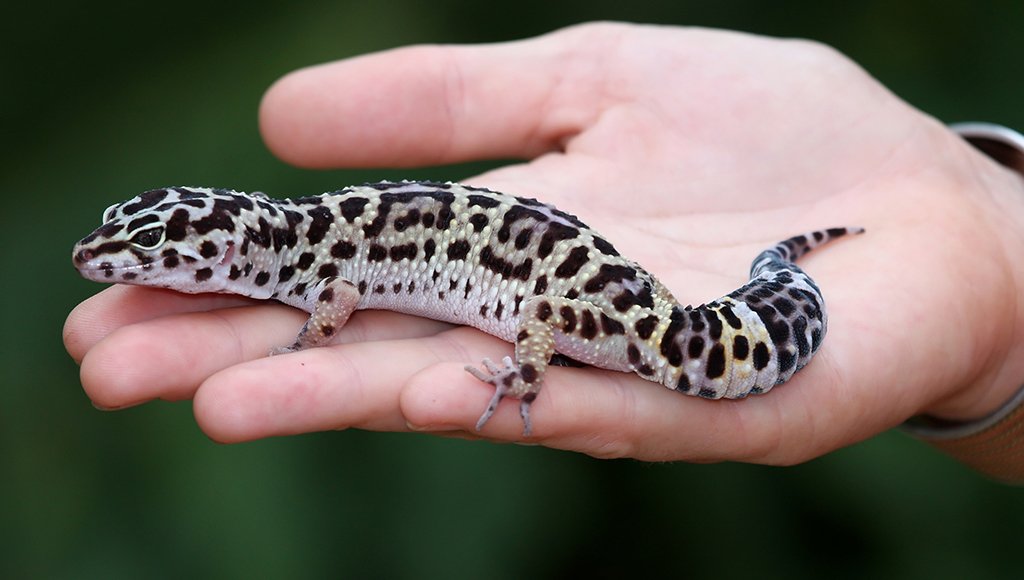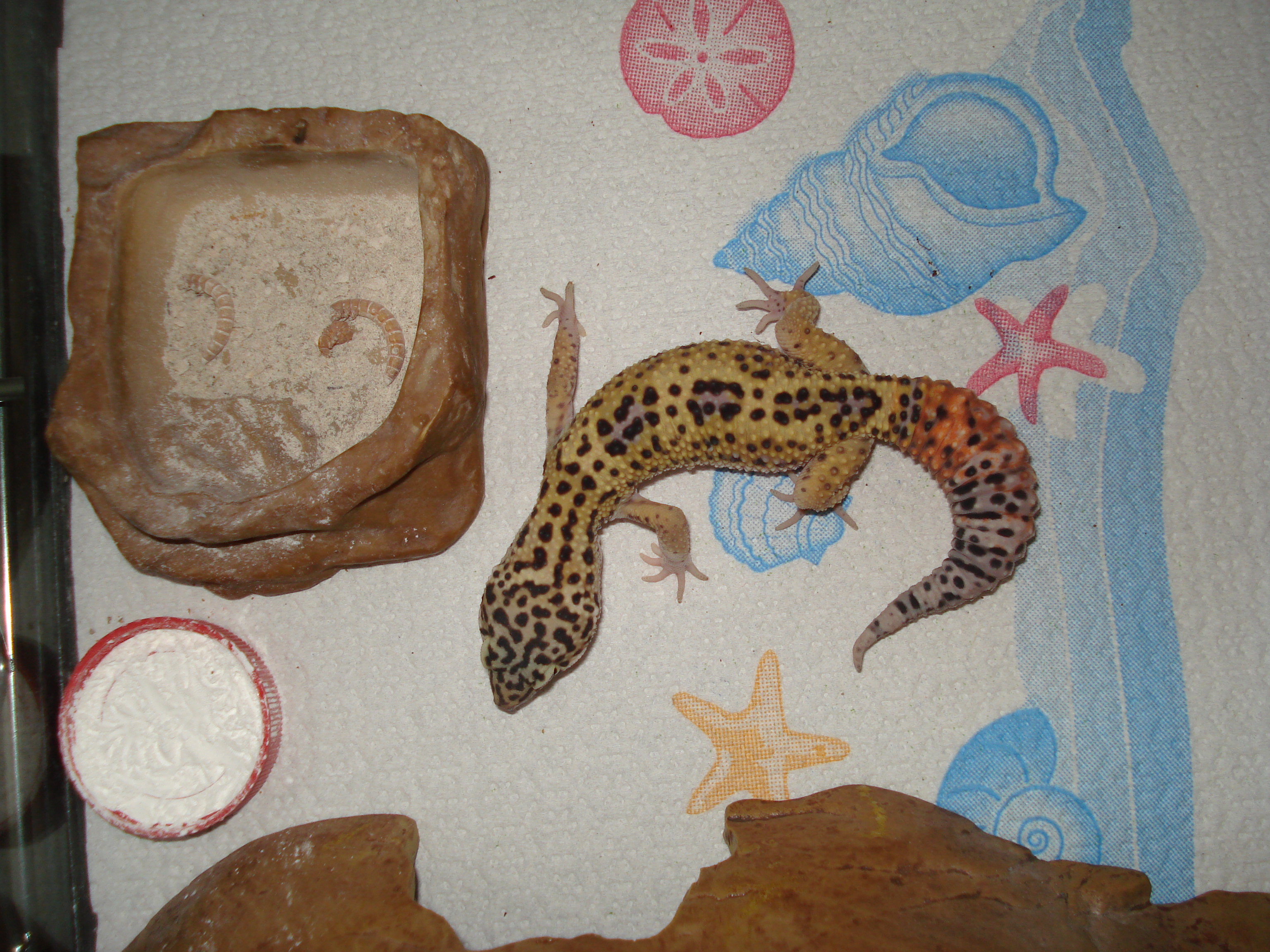Why Can Leopard Geckos Fall And Be Fine

Leopard geckos are able to fall up to five feet and be fine because of their thick tail. The tail is full of fat and acts as a cushion when they land. They also have long toes with sharp claws that help them grip surfaces and keep from falling.
Leopard geckos are capable of falling from great heights and landing without sustaining any injuries. This is due to their flexible skeleton and strong leg muscles, which help to cushion the impact of a fall. Their thick skin also provides some protection against bumps and scrapes.
So, if your leopard gecko takes a tumble, don’t worry – they’re built to withstand it!

Credit: geckotime.com
Can Geckos Survive a Fall?
Yes, geckos can survive a fall. In fact, they are quite adept at it! Geckos have special toe pads that help them grip surfaces and keep from falling.
These toe pads also allow them to climb vertically up walls and even across ceilings! So if a gecko falls, it’s not likely to be hurt.
Can a Lizard Survive a Fall?
Yes, a lizard can survive a fall. Lizards are able to right themselves in mid-air and land on their feet due to the shape of their bodies and their long tails. Their scales also help to protect them from injury.
What Does It Mean When a Gecko Falls?
There are a few different possible interpretations of what it means when a gecko falls. One interpretation is that the gecko is trying to escape from something and is using its fall as a distraction. Another interpretation is that the gecko is sick or injured and has lost its balance.
What Keeps Geckos from Falling?
Geckos are able to walk on walls and ceilings due to the millions of microscopic hairs on their toes that grip surfaces. The toe pads of a gecko’s foot are separated into tiny lobes, each ending in a spatula-shaped pad covered in even tinier hairs. Together, these structures allow geckos to get a firm grip on rough surfaces like tree bark or stone walls.
The hair-like setae on a gecko’s toes can also act like Velcro, sticking to smooth surfaces like glass. When a gecko lifts its foot, the van der Waals forces between the setae and the surface are broken and the foot is released. Geckos can also run very fast and make quick turns thanks to their tails, which help them keep their balance.
How NOT to Care for Leopard Geckos – Common Mistakes!
How High Can Leopard Geckos Jump
Leopard geckos are known for their impressive jumping abilities. They can jump up to 2.5 feet in the air, which is about half their body length. This allows them to escape predators and catch prey with ease.
When leopard geckos jump, they use their long tails as a counterbalance, which helps them achieve such great heights.
How Far Can a Lizard Fall Without Getting Hurt
Lizards are pretty tough creatures. They can fall from pretty great heights and not get hurt. In fact, lizards have been known to fall from trees and survive without any injuries.
So, how far can a lizard fall without getting hurt? Well, it really depends on the size of the lizard. A small lizard could probably fall from a few feet up and be just fine, while a larger lizard could survive a fall from several stories high.
Of course, there is always the chance that a Lizard could get injured if it falls from a very great height, but generally speaking, they are able to withstand quite a bit of force. So, if you see a Lizard falling, don’t worry too much – chances are it will be just fine!
I Dropped My Leopard Gecko
If you’ve ever had a leopard gecko as a pet, you know that they’re delicate creatures. They can easily be injured if they fall from a height or are dropped. If you do drop your leopard gecko, there are some things you can do to help them recover.
First, check for any obvious injuries. If your leopard gecko is bleeding or has a broken limb, get them to the vet immediately. Even if there don’t seem to be any major injuries, it’s always a good idea to take your leopard gecko to the vet for a check-up after they’ve been dropped.
Once you’re sure that your leopard gecko doesn’t have any life-threatening injuries, you can start helping them recover at home. Start by making sure that their enclosure is warm and humid enough. Leopard geckos need high humidity levels to shed properly, so this is especially important if they’ve recently shed their skin.
Next, offer your leopard gecko plenty of food and water. They may not feel like eating or drinking right away, but it’s important to make sure they stay hydrated and nourished during their recovery period. You can also offer them calcium supplements to help with any bone fractures or other injuries they may have sustained in the fall.
Finally, give your leopard gecko some time to rest and heal.
Can Having a Leopard Gecko as an Emotional Support Animal Help with Falling and Being Fine?
Leopard geckos as emotional support animals can indeed assist with achieving a sense of calmness and well-being. Their presence and unique behaviors can be soothing and comforting, helping individuals cope with daily stressors. These reptiles require low maintenance, making them suitable companions for those seeking solace. With their gentle demeanor, leopard geckos can contribute positively to emotional stability, fostering a sense of tranquility and assisting in overcoming emotional hurdles.
How Far Can a Leopard Gecko Jump
Leopard geckos are one of the most popular reptile pets. They’re small, relatively easy to care for, and have a docile personality. One of the coolest things about leopard geckos is their ability to jump.
While leopard geckos aren’t known for their acrobatic abilities, they can actually jump quite far considering their size. A well-fed adult leopard gecko can easily jump 3 feet in the air. That’s almost half their body length!
If you’ve ever seen a leopard gecko jump, you know that they don’t just spring into the air like other animals do. Instead, they arch their back and push off with their powerful hind legs. This gives them extra height and distance.
So why do leopard geckos jump? In the wild, they use this skill to escape predators or catch prey. But in captivity, there’s usually no need to jump since there are no predators around and food is provided on a regular basis.
Sometimes leopard geckos will still jump out of excitement or fear, but it’s not necessary for survival.If you have a pet leopard gecko, be sure to provide them with plenty of hiding spots and perches so they feel safe and secure in their environment. And if you ever see your leopard gecko take flight, it’s just another reminder of how amazing these reptiles really are!
Conclusion
Leopard geckos are one of the most popular reptiles kept as pets. They are also one of the easiest to care for, in part because they are able to fall from a height and be fine.This is due to their strong legs and tail, which help them to break their fall and land safely.
Their tails also store fat reserves, which can help them survive if they cannot find food for a period of time.